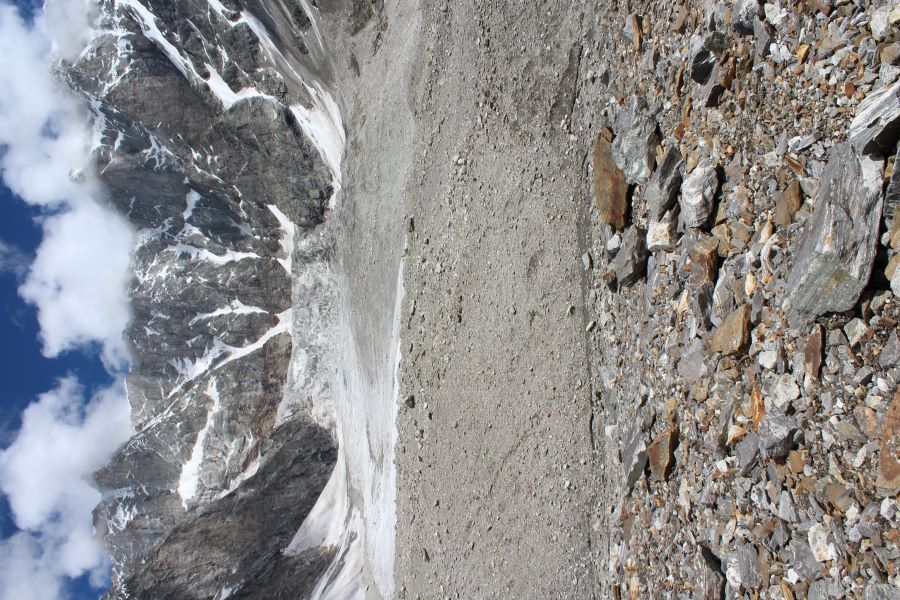
Integrating physically based modelling of debris-covered glacier melt and mātauranga Māori to improve the accuracy of projections of glacier change

Debris-covered Satopanth bamak (glacier) in the Garhwal Himalaya, India. Dr Winter-Billington will compare observations of Satopanth, a glacier in Nepal, and Haupapa Tasman Glacier in Aoraki Mt Cook National Park, to improve understanding of the regional variability of the underlying processes of surface melting on debris-covered glaciers (photo supplied).
Glacier meltwater is used for hydro-electricity and agricultural production in Aotearoa New Zealand and elsewhere, and is crucial to economic activity in some dry years. People use glacier melt models to understand changes in meltwater discharge. However, model predictions are inherently uncertain. Understanding prediction uncertainties is key to the success of adaptation and management strategies. Many mountain glaciers are covered by a continuous layer of rock debris. However, traditional glacier melt models, used in all regional studies of glacier change, misrepresent melt of debris-covered glaciers (DCG). Recent work showed that DCG melting is sensitive to interactions between the debris layer and meteorological conditions. However, the physical relations underlying that sensitivity are poorly constrained. The contribution of interactions between debris properties and meteorological conditions to uncertainties around regional projections of glacier change needs urgent evaluation. Aotearoa’s largest glacier, Haupapa Tasman Glacier, is 28 % debris-covered. The meltwater from Haupapa sustains a diverse ecology, and the indigenous Kāi Tahu people have thrived in the region for hundreds of years. It is likely the iwi hold knowledge of relations between meteorological conditions, and snow and ice melting. Mātauranga Māori ki Kāi Tahu could be valuable in efforts to improve understanding of climate change impacts on glaciers. This study aims to improve the accuracy of DCG melt models, and increase certainty around projections of glacier change, by integrating the physics of DCG melt and mātauranga Māori of the cryosphere. Following a Kaupapa Māori methodology (i.e. contingent on the wants and needs of knowledge-holders), this work intends to document mātauranga Māori of the cryosphere, and constrain the sensitivity of sub-debris melt to interactions between debris layer properties and meteorological conditions. A synthesis of the two approaches will improve certainty of projections of glacier responses to climate change.
